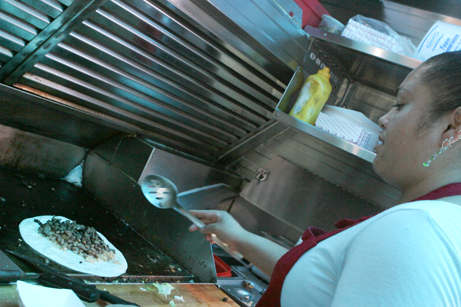
Food and drink requirements are changing for local schools
School lunches can be a lesson as much as anything taught in the
classrooms.
Food and drink requirements are changing for local schools
School lunches can be a lesson as much as anything taught in the classrooms.
State legislatures and nonprofit advocacy groups are both working to increase the healthy choices that children have available to them.
“We found that when you are able to change the school environment, children will choose healthy items,” said Adam Duker, a food policy advocate with California Project LEAN, who works in Monterey, San Benito and Santa Cruz counties. “But when they are bombarded by bad choices, it’s not just harder, you are fighting a losing battle.”
California public schools for children in kindergarten through 12th grade will have to adjust their food standards to meet new state requirements by 2007. The beverages sold at all schools will also be adjusted by July 2009.
The laws – Senate Bill 12 requires food changes and SB965 requires drink changes – are part of an effort by state politicians to encourage a healthier lifestyle starting with youngsters.
The California Health and Human Services agency along with Gov. Arnold Schwarzenegger has been working with a variety of agencies to encourage healthier lifestyles in an attempt to lower rates of obesity and other illnesses. One of the first steps is offering healthy foods and beverages at schools.
The laws, Duker said, are really just a first step.
“They are a good first step,” he said. “They get rid of the worst of the worst offenders. The highest amount of sugar is in sodas and the highest fat is in Cheetos. But they don’t positively define what healthy foods are.”
The rate of illnesses such as diabetes that are exacerbated by poor eating habits is on the rise. In 2001, 4.9 percent of San Benito County residents had diabetes. In 2003, the rate increased to 6.4 percent, according to statistics from the California Department of Health Services.
In a county where nearly 50 percent of students rely on schools for breakfast or lunch through the national free or reduced lunch program, local school meal planners already meet national standards set by the United States Department of Agriculture in designing their monthly school menus. But schools can go much further in redefining food at schools.
“The interesting thing is that most students eat the vast majority of their food at school,” Duker said. “Most students that are overweight or obese – it’s not what they eat at home. They eat 70 percent of calories or more at school.”
Duker sees the struggle to offer healthy options not just in the cafeteria, but also throughout the schools. School fundraisers sell candy or pizza. Nachos and hot dogs are sold at athletic events. Even advertising can derail healthy choices, when ads for things like milk include actors eating cookies or brownies, Duker said.
“If they promote healthy foods and they are available and accessible, children naturally choose the healthy foods,” he said.
With some schools he has worked with in Monterey, food-based fundraisers have been replaced with alternatives and Cheetos have been replaced with carrot sticks. When they are making better choices at school, Duker said students even make better choices at home.
“It does carry over into the rest of their lives,” he said.
The new state laws will eliminate the worst food snacks and drinks that are served outside of the lunch program. The list includes things such as fruit snacks, sparkling fruit beverages and flavored waters that often contain more sugar than actual fruit.
Replacing many of these items are more nutritious snacks such as fruits and vegetables, nuts, nut butters, seeds, eggs and string cheese. Drinks that will be allowed at elementary schools include water; 2-percent milk, 1-percent milk, nonfat or nondairy milks; and fruit or vegetable drinks composed of at least 50 percent fruit or vegetable juice.
In addition to those drinks, middle schools and high schools may offer electrolyte replacement beverages that have less than 42 grams of sweetener per 20 ounce serving.
“Gatorade – that is not a healthy option for most students – unless they have been involved in moderate exercise,” Duker said.
SB 12 changes
Elementary schools dairy and whole grain foods:
· 35 percent or less total calories from fat.
· 10 percent or less percent total calories from saturated fat.
· 35 percent or less weight from sugar (except fruits and vegetables).
· No more than 175 calories per item.
Middle and High School snacks:
· 35 percent or less total calories from fat.
· 10 percent or less total calories from saturated fat.
· 35 percent or less weight from sugar (except fruits and vegetables).
· No more than 250 calories per item.
Middle and High School entrees:
· 400 calories or less.
· 4 grams of fat per 100 calories or less.
· Meets the National School Breakfast or lunch program standards as an entree item.
Melissa Flores can be reached at
mf*****@pi**********.com
.








